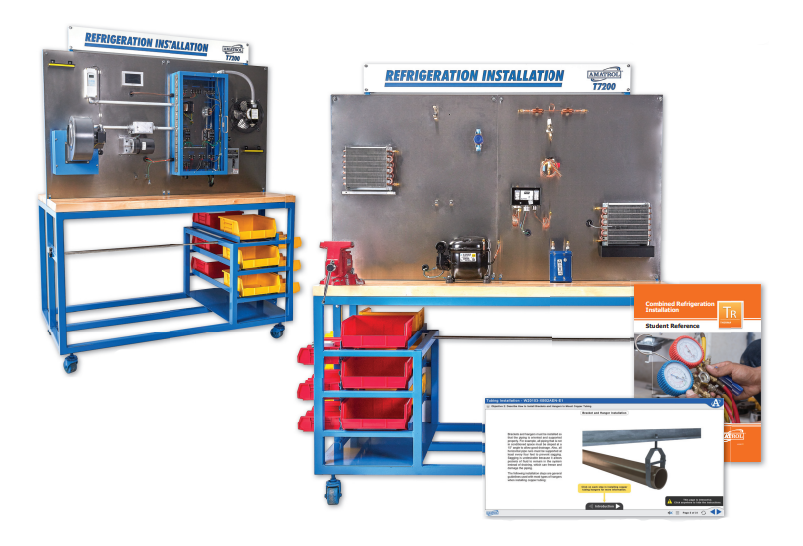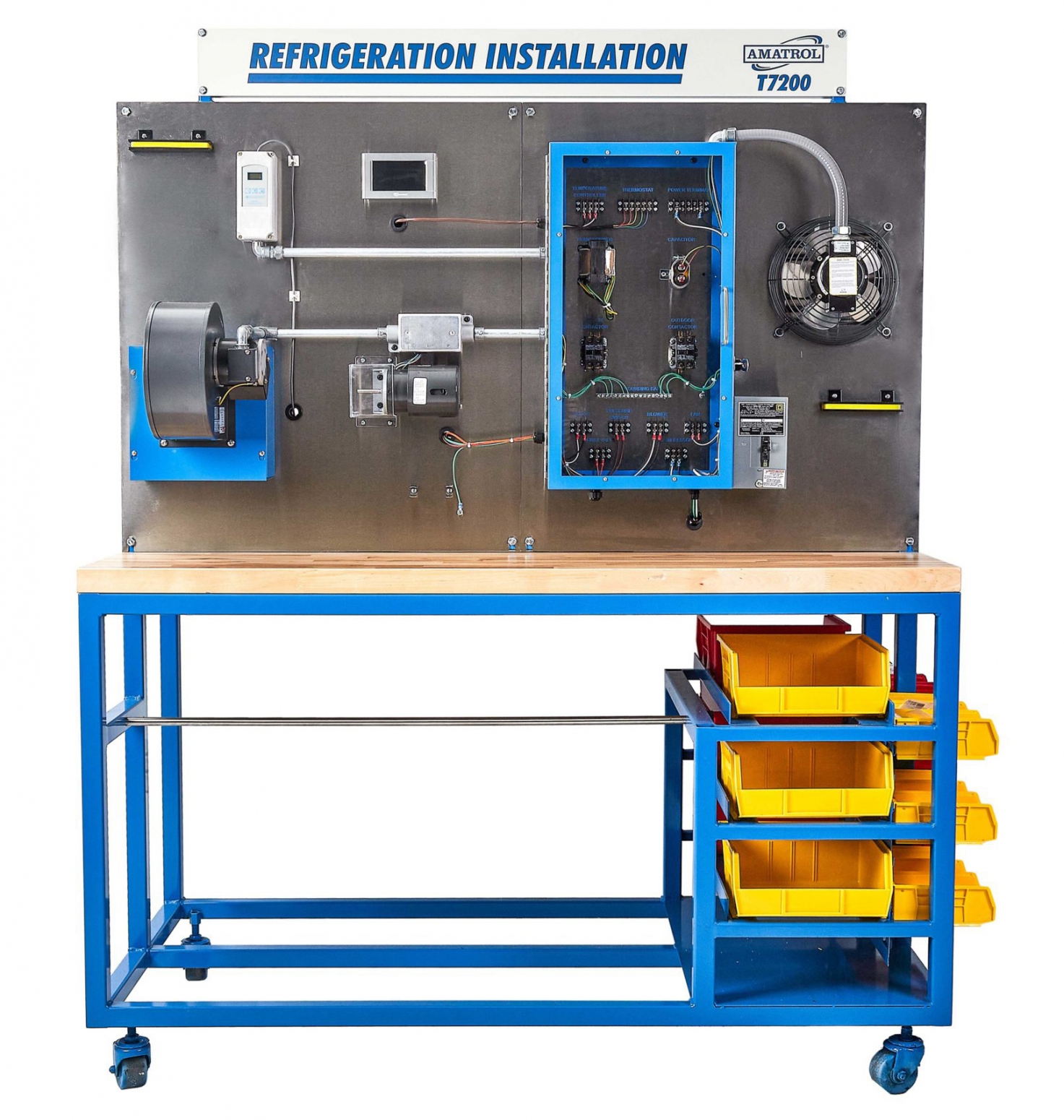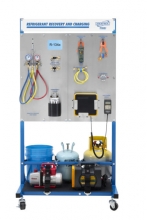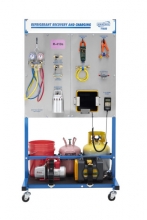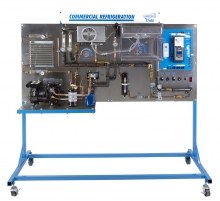Combined Refrigeration Installation Learning System
Amatrol’s Combined Refrigeration Installation Learning System (T7200) offers a comprehensive hands-on workstation and interactive multimedia curriculum to teach the installation of electrical and mechanical refrigeration/air conditioning components in residential or light commercial applications. This system in an ideal training tool for future HVACR technicians.
The Combined Refrigeration Installation Learning System includes evaporator and condenser coils, a hermetically-sealed compressor, a filter/drier, and many more real-world industrial components that allow learners to practice skills with components that they’ll find on-the-job. The included multimedia curriculum covers topics such as copper tubing, refrigerant line routing and bending, flaring and swaging copper tubing, brazing and soldering refrigerant lines, and copper tubing insulation.
Develop Real-World HVACR Skills
The Combined Refrigeration Installation Learning System (T7200) includes real-world components found in HVACR environments that learners will use to practice hands-on skills like cutting and preparing copper tubing, operating a lever-type tube bender, flaring copper tubing and assembling a fitting, leak testing a refrigerant system, and installing tubing installation on an HVACR system.
World-Class Smart Sensor eLearning Curriculum
Amatrol’s included curriculum highly-interactive multimedia curriculum features stunning 3D graphics and videos, voiceovers of all text, and interactive quizzes and exercises designed to appeal to learners with different learning styles. The T7200 curriculum teaches learners the fundamentals of combined refrigeration through topics like safety rules for mechanical HVACR system installations, identifying copper tube stock, mounting hardware for copper tubing, installing line sets, and setting up oxyacetylene welding equipment. The combination of theoretical knowledge and hands-on skills solidifies understanding and creates a strong basis for pursuing more advanced skills.
Study Residential and Commercial Refrigeration Concepts
Mobile, Ergonomic, Easy-to-Use System
Amatrol’s learning system features a stainless steel panel design and a welded steel frame with pre- mounted components to save time on setup. The workstation is mounted on casters for easy mobility around your classroom or facility. Learners experience a horizontal and vertical component arrangement, with a built-in workbench for tube bending and work holding for soldering components.
Combined Refrigeration Installation Student Reference Guide
A sample copy of the Combined Refrigeration Installation Student Reference Guide is also included with the system for your evaluation. Sourced from the system’s curriculum, the Student Reference Guide takes the entire series’ technical content contained in the learning objectives and combines them into one perfectly-bound book. Student Reference Guides supplement this course by providing a condensed, inexpensive reference tool that learners will find invaluable once they finish their training, making it the perfect course takeaway.
Learning Topics
- HVACR Mechanical System Installation of the Refrigeration Circuit
- HVACR Refrigerant Circuit Diagrams
- Copper Tubing for HVACR Systems
- Refrigerant Line Routing and Bending
- Cutting and Preparing Copper Tubing
- HVACR Fittings
- Flaring and Swaging Copper Tubing
- Brazing and Soldering Refrigerant Lines
- Leak Testing a Refrigerant System
- Copper Tubing Insulation
Key Features
- Mobile, Egonomic, Easy-to-Use Design
- Industry-Standard HVACR Components
- Multimedia eLearning Curriculum
Additional Requirements
- R134a refrigerant
- Refrigerant Recovery and Charging Learning System (T7031) or customer-supplied equivalent
- Hand Tool Kit (19264)
- Hand Tool Kit (19265)
- Computer, see requirements: www.amatrol.com/support
- Electricity (120V/60Hz/1ph)

